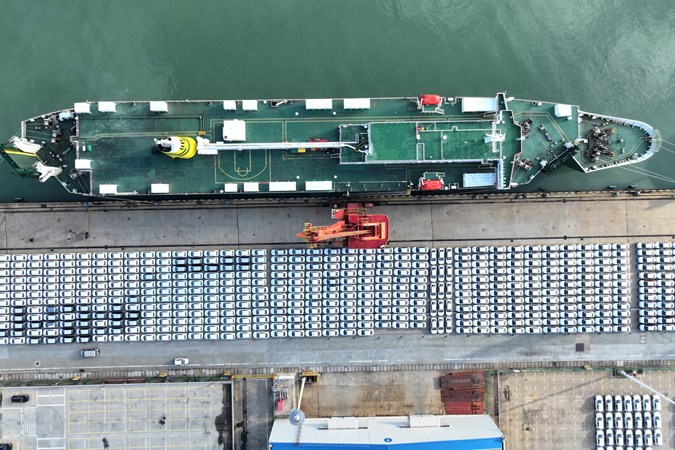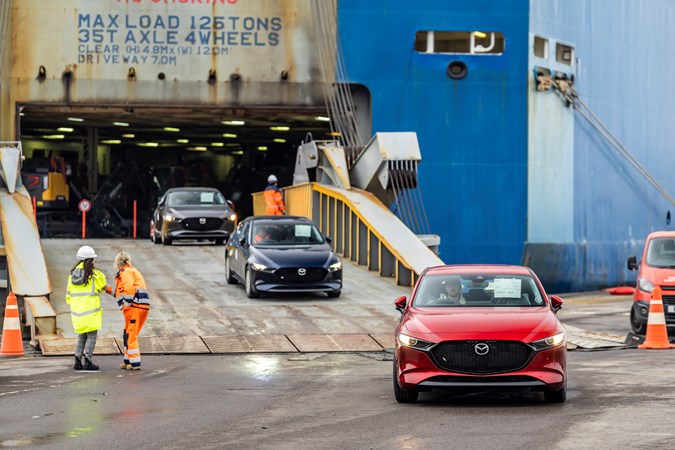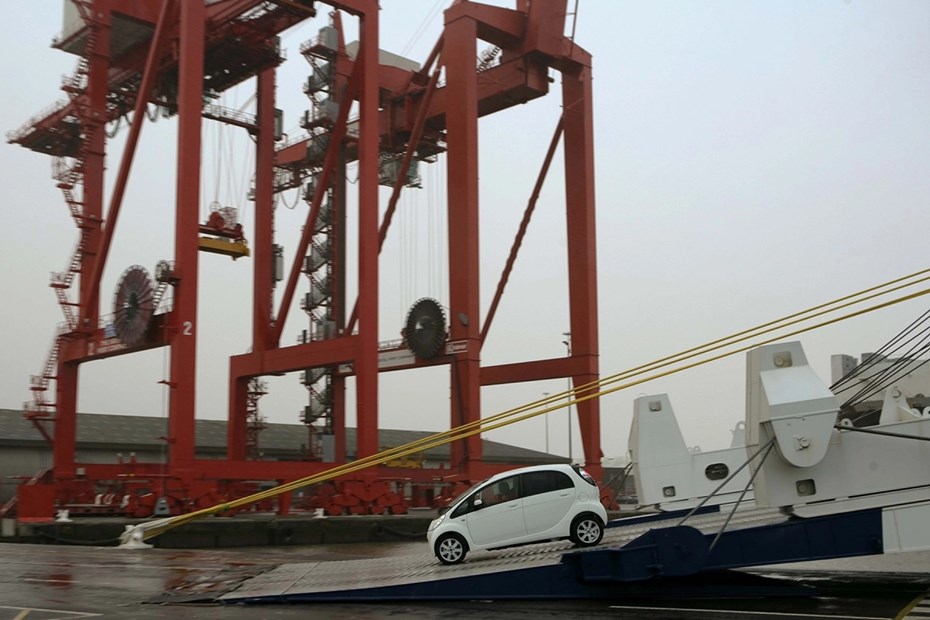There are so many great used cars available to buy from Japan. There’s a whole world of fascinating Japanese domestic market (JDM) models never sold new in the UK, and a rich seam of European-brand cars typically in a higher spec and better condition than those on the market here. No wonder so many people are importing a car from Japan.
The trade in these so-called grey imports took off in the late 1990s, partly because of favourable exchange rates, mostly because there are so many fascinating cars available exclusively on the JDM. Sports cars such as the Nissan Skyline, Mazda RX-7 and Mitsubishi Evo have always been hugely popular in the UK, and MPVs such as the Toyota Alphard, Nissan Serena and Honda Odyssey. Then there are often delightfully eccentric Kei-cars – restricted to 3.5m long and a 660cc engine – and oddities such as the Nissan Figaro.
On top of that, JDM cars are often extravagantly equipped and sumptuously trimmed, and the pool of low-mileage cars in very good condition is much bigger than it is here. There’s also a truly vast number of used cars available in Japan. It’s country with a similar population to the UK but the new car market is four times bigger, so it has far more used cars than it needs.
There are various ways you can import a car from Japan, from going through a specialist to DIY-ing it. In this guide, we’re going to look at every stage of the process of getting your chosen car to the UK, and what has to happen once it’s here.

How to import a car from Japan to the UK
The easiest way of importing a car from Japan is going through one of the many UK car dealers that specialise in JDM imports. You may find one already has a car you want in stock or on the way; if not, many take orders and their people on the ground in Japan then find and ship a suitable car for you.
In most cases, the dealer will deliver the car registered and MOT’d, with all taxes and duties paid, for a pre-agreed price. However, make absolutely sure the dealer is reputable; you have a signed contract stating exactly what service is being providing, and what the costs and timings will be; that you get pictures of the car and a condition report before it’s purchased; that the car delivered is the car promised.
There’s another sort of specialist that provides access to the Japanese car auction platforms – around 250,000 cars are auctioned there every week – allowing you to find the car you want and bid on it yourself. You pay for the car via the specialist, some of whom provide a full service for shipping the car to the UK and making it road legal on arrival. Again, make sure you use a reputable company, you know exactly what service they’re providing and what it costs.
Alternatively, you can DIY the process, finding a car for sale at auction or a dealer in Japan and then arranging payment, documentation, shipping and UK registration yourself. It’s by far the most difficult option, though potentially the most rewarding – it’s a good excuse for a holiday if nothing else.
We’ve broken the process of importing a car from Japan down into six steps. You need to be aware of them whether you go through a specialist or not – the more information you have, the more confident you can be about it.

Choose your car
If you don’t have a firm idea what JDM car you want, wading through all the options can be a bit of a headache. A specialist dealer should have the knowledge to help you zero in on the best options, or you could find a Japanese car auction website and sift through the models – which can be rather fun, if you’ve got the patience.
Any car that catches your eye, get Googling to find out exactly what it is. Some auction listings can be light on detail, so you may need to dig further to find out what a particular car’s specification is. European cars may be in a different spec to that sold in the UK, as well.
The condition of cars at auction is graded on a standardised scale – don’t bother with anything less than 3.5 unless you want a project. If you’re interested in a car being sold by a dealer in Japan, find someone independent who can assess it for you – actually not that hard. Better yet, take a holiday and have a look yourself.
Seal the deal
You should, of course, be very cautious when spending a large amount of money on something that’s on the other side of the world. Research any dealer, auction house or intermediary thoroughly before paying, carefully check the fine print for hidden fees and ideally pay by credit card so it’s easier to get your money back if anything goes wrong.

Arrange shipping to the UK
Yet more careful research is needed to make sure you use an experienced, trustworthy shipping company to get your car to the UK safely, on time, with all the paperwork in order. Look for a company that:
- Specialises in international vehicle shipping
- Offers full insurance coverage for the transit
- Provides a breakdown of all the fees and charges up front
- Provides photos and/or video showing the car’s condition before shipping
- Has strong reviews and high ratings from previous customers
There are three ways a car can be shipped from Japan the UK, each with their own pros and cons:
Roll-on/roll-off (RoRo): Your car is driven onto a dedicated vehicle transport ship, along with thousands of others. It’s the most affordable option, the transit can be relatively speedy, but it’s only suitable for running vehicles.
Shared container load: Your car is shipped with others in a container, splitting the cost between several people. Usually a more secure option and can be suitable for non-running cars, but shipping may take longer as you wait for the container to fill. Container ships can take very long, circuitous journeys, as well.
Full container load: Your car has a whole container to itself. The most expensive option, but it can be quicker if the ship is taking a direct-ish route.

Whichever option you take, you’ll have to wait for space on a ship to become available, which can take a while. Really good shipping companies book space well in advance so customers don’t have to wait. Make sure you get the name of the ship your car’s on and follow its progress on a marine tracking app.
Organise the required paperwork
There’s a lot of paperwork that’s crucial to have in order so your car can be legally exported from Japan and imported into the UK. Getting it right saves time, headaches, possibly extra fees, down the line. Some documents are provided by the seller and shipping company – make sure you get copies – some by you. If your DIY-ing, have an expert verify everything’s in order.
Here’s what you need:
Export certificate: Issued in Japan, verifies the car has been deregistered there, giving it legal clearance for export.
Bill of sale: Proof of purchase showing the transaction’s details, the car’s make, model and VIN, and the seller’s and buyer’s information.
Shipping invoice: Shows the details and costs of shipping; needed for customs clearance and calculating import duties.
Insurance documentation: Proof the vehicle is insured during transit, covering any damage picked up on the way to the UK.
Customs import declaration (C88): A form required by HMRC to declare the vehicle has landed in the UK. Used to calculate any import duties and VAT due.
Proof of compliance with UK standards: Depending on the car’s type and age, you may need documentation showing it meets UK road safety and emissions standards such as a Certificate of Conformity.

Register your car with the DVLA
Once your car has landed in the UK, it’ll have to clear customs at the port. You also need to notify HMRC of the car’s arrival within 14 days and pay any duties and VAT levied – don’t forget to factor them into your budget. Once you’ve paid, HMRC issues a Notification of Vehicle Arrival (NOVA) certificate that the DVLA will want to see.
Then you need to complete DVLA form V55/5 to register a used vehicle, or V55/4 to register a new vehicle. You also need the following documents:
- Proof of Individual Vehicle Approval (IVA) or Certificate of Conformity.
- Form V267 – a.k.a. declaration of newness – for new vehicles.
- Original foreign registration document, or other proof of the car’s date of manufacture obtained from the manufacturer or a club.
- Proof of the date the car was collected from the docks.
Ensure your car meets UK regulations
If your car doesn’t come with a Certificate of Conformity – showing it complies with UK regulations – it needs to go through an Individual Vehicle Approval (IVA) test so it can be registered in the UK. Fortunately, pretty much every JDM car just about meets the UK’s surprisingly slim requirements; all that needs doing in most cases is adding a rear fog light – which isn’t required in Japan. Cars over three years old also need an MOT.
Other things to bear in mind
A car’s condition can deteriorate if its been sat dockside and/or at sea for several weeks. Salty air attacks anything, especially metal. High humidity may have caused the interior to go mouldy, as well. Expect your car at least needs a thorough clean once it arrives.
Cars can get damaged in transit, particularly if the ship encountered a storm. Photos showing the car’s condition before it was loaded make it easier to claim for any damage picked up.
Japanese roads aren’t salted in winter, so JDM cars aren’t really rustproofed. It’s best to have yours fully rustproofed as soon as possible. British winters are absolutely brutal on unprotected metal and that’s resulted in the many JDM imports leading a very short life here.
Japan uses the metric system, so your car’s speedo and odometer will be in kilometres. You can get them converted to miles, but it’s not required. Similarly, the car’s infotainment system, handbook and service history will be in Japanese. It’s possible to get translations, but they can be expensive.
FAQs
-
Will importing a car from Japan to the UK increase my insurance costs?
Probably – because insurers have to factor in that repair costs can be quite high. Why? Parts for cars unique to the JDM have to be found and shipped over, which can be costly. Even models that were also sold in the UK can have subtle differences in things like exterior trim and lights.
There are UK companies that specialise in supplying parts for more popular JDM models, so those cars can be cheaper to insure. For other ways to potentially lower your premium, check out our guide on reducing car insurance premiums. -
Can I import any Japanese car, or are there restrictions?
There aren’t any legal restrictions on which JDM cars can be imported to the UK, from either the Japanese or British end. However, it’s slightly easier to export cars more than 10 years old – essentially because Japanese authorities make it harder to use older cars there – and slightly more difficult to import nearly new cars because there can be emissions-related hoops to jump through. All JDM cars do have to be made road legal in the UK, but that usually just involves having a rear fog light fitted and an IVA test completed.
-
How long does it take to import a car from Japan?
Expect it to take at least six weeks to buy the car and have it shipped over, clear customs and be made road ready. However, it can take much longer, especially if there are shipping delays, which happens quite often.
Just so you know, we may receive a commission or other compensation from the links on this website - read why you should trust us.














